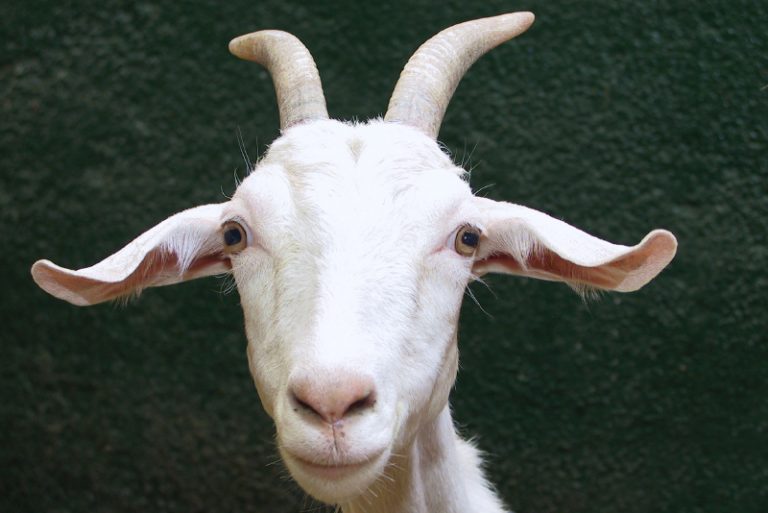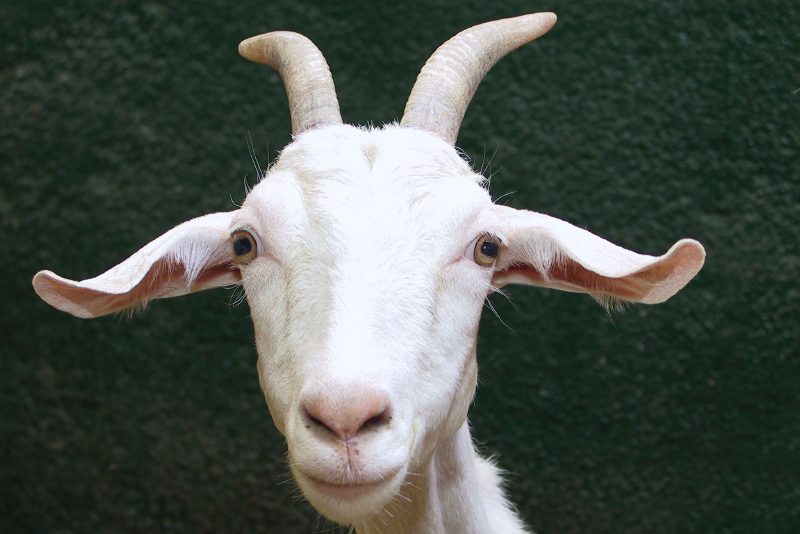As the Seder night ebbs away, long after the Four Questions have been asked and answered, after the festive meal has been eaten and the post-feast drowsiness descends; after the evening’s mitzvot have been observed and the fourth cup of wine emptied, we raise our voices in a curious, delightful, seemingly whimsical song at the end of the Haggadah. Chad Gadya. This lively tune is, at once, one of the most popular of the many Pesach songs and, at the same time, one of the strangest.
 On the surface, Chad Gadya appears to be nothing so much as a simple folk tune. Perhaps even a nursery rhyme suitable for the “youngest amongst us”, the very child who sang the Four Questions early in the Seder. Like so many nursery rhymes, it is filled with odd images and paradoxes. An egg perched upon a wall? A fork running away with a spoon? A cow jumping over the moon? Two young children tumbling down the hill?
On the surface, Chad Gadya appears to be nothing so much as a simple folk tune. Perhaps even a nursery rhyme suitable for the “youngest amongst us”, the very child who sang the Four Questions early in the Seder. Like so many nursery rhymes, it is filled with odd images and paradoxes. An egg perched upon a wall? A fork running away with a spoon? A cow jumping over the moon? Two young children tumbling down the hill?
What are we to make of these curious images? Likewise, what are we to make of a song that seems, on its surface, to be about the purchase of a goat? While it is possible to enjoy the song just in the singing, to become enraptured by the p’shat of the song, the paradoxes and troubling images draw us deeper into the song, searching for its meaning and significance.
And why have the rabbis placed this strange song in the Haggadah?
Certainly, it keeps the children awake so that the end of the Seder night is as filled with delight as its beginning. But more than that, the song is part of a sublime and meaningful religious-halachic experience. About goats? What does Chad Gadya, a song worthy of Dr. Seuss, a song that goes on and on about goats, cats, dogs, sticks, and butcher shops have to do with the leil shimurim, the night of geula and redemption?
Is this any way to conclude sippur Yetziat Mitzrayim?
Perhaps Chad Gadya, in its guise of a nursery rhyme is no different than the Afikomen, one more in a series of games and songs and techniques to stimulate and motivate the interest and curiosity of the youngest amongst us on the Seder night. By the end of the Seder, after the Afikomen has been found and its reward exacted, after the story has been told and the festive meal consumed, the children grow sleepy and want nothing more than to curl up in their mothers’ laps and enjoy a well-deserved schluff. But no, not yet! It is not yet time to slumber and so we continue the many and seemingly strange things at the Seder to keep the children awake. So, we arrive at the lively and lebedig songs that culminate in Chad Gadya.
Okay, it is delightful to children. But what is its significance for adults?
And even if the song’s purpose is to keep the children awake, the song’s theme and images are depressing and cruel. Despite the melody, this is no amusing little ditty. No character escapes unscathed in Chad Gadya. The kid is innocent and harmless, but the cat consumes him. The dog takes revenge on the cat, but the dog then gets a beating. The stick beats the dog, but then gets burnt by the fire and so on and so on until the song’s climax, the grand finale of the entire Haggadah which comes with a triumphant crescendo.
Then came the Holy One, blessed be He, and smote the angel of death, that slew the slaughterer, that slaughtered the ox, that drank the water, that quenched the fire, that burned the stick, that beat the dog, that bit the cat, that ate the kid, that father bought for two zuzim. One only kid, One only kid.
God has entered the scene.
His involvement in the song’s turn of events certainly means that Chad Gadya cannot be understood only as a simple, whimsical rhyme. And so it turns out that this deceptively simple song is filled with insightful lessons. In fact, Chad Gadya incorporates one of the most fundamental elements of emunah. As such, it belongs as the grand finale of the entire Haggadah.
Over the centuries, differing interpretations have been offered to explain the song. Many see in its dark imagery the history of Israel, the lone, innocent kid. The father Avinu Shebashamayim, selected the lone kid, when giving two zuzim, two tablets of the covenant. The animals, objects and people who subsequently destroy and beat one another are the various nations that persecuted, subjugated and oppressed the “one lamb among the seventy wolves” throughout history. Ultimately the Holy One, blessed be He, comes to bring about the final redemption of His beloved kid, who remained alone and separated front the devouring nations.
Another explanation takes the form of a debate between a Jew and an Egyptian. Framing this interpretation is the understanding that the kid is an animal both deified and worshipped by the Egyptians. Seeing in this deification the essence of idolatry, the Jew wonders how the Egyptian can worship a kid that can be devoured by a cat. When the Egyptian responds that he will then worship the cat, and the Jew retorts that a dog can overpower the cat, the Egyptian quickly transfers his allegiance to the dog. The debate persists until the Jew concludes, “But all powers on earth are subservient to the Holy One Blessed be He, Why don’t you finally realize that only He is to be worshipped?”
Another understanding views the goat as man’s soul which descends (“sold by the father”) to this earthly existence and suffers through the trials and tribulations of life as it moves (zuz-zazin) about in this world. Each stanza of the song symbolizes another phase and stage of life as we know it. As life progresses and years pass by, man is called to task, “ Chad Gadya, Chad Gadya – Unique soul! Unique soul! – What have you accomplished on this world? What are you doing here?” But at each step and every stage, man procrastinates, thinking that there will always be time to tend to the spirit and soul. “Later” however, never comes. Finally, man is warned that in due time the soul will have to return to its source and give reckoning for its deeds.
Ultimately, every man must answer to a higher Source!
The Chatam Sofer brings Chad Gadya closer to Pesach, and finds therefore a parallel between this very last song and the very first Haggadah paragraph, “This is the Bread of Affliction”. Both are in Aramaic. Both were authored subsequent to the galut and renewed exile from Eretz Yisrael. Both are forms of elegies (kinah) bemoaning the renewed galut, recalling when matzah was eaten not as the bread of affliction but as the bread of freedom and when the Pesach was attended by the pageantry of a Temple sacrifice in Jerusalem. Now we eat matzah, but again as the bread of affliction. Likewise, we recall the entire service of Pesach, which encompassed the offering of both a Pesach sacrifice and a Chagigah Korban (chad gadya, chad gadya) which were bought for shtei kesef (two zuzim). And now, chad gadya, chad gadya—woe unto us how we have lost two beautiful gediyim! Who knows when the endless galut will cease, and we will again be able to rejoice in the rebuilding of God’s Holy City, when we can once again partake of the sacrifices and Pesach offerings!
So too, the Gaon of Vilna traces the theme of Am Yisrael’s trials and tribulations throughout its long sojourn in galut. The two gediyim bought by father are the ones purchased by father Yaakov and brought to Yitzchak on the night of Pesach. These were to become the dual korbanot offered on Pesach, which merited Yaakov the blessing of Yitzchak as well as the bechorah. The cat is the jealousy, the dog is Pharaoh, the stick is Moshe’s staff, the ox is the Kingdom of Edom, the slaughterer is Moshiach ben Yosef who will be killed by the angel of death. “Then came the Holy One, blessed be He” who will redeem His people and nation and “raise the banner to gather our exiles.”‘
As many interpretations and meanings as interpreters! A review of these various understandings, however, always returns us to the central theme of Chad Gadya, the same theme that makes clear that the song is no child’s ditty. That theme is, quite simply, that God is the Master of the world. No true story begins or ends without God. Whether we like it or not, whether we want it or not, whether we deign to recognize it or not, God must enter into every story of our individual and collective life. God is the Master of all. He conducts the affairs of the world in His fashion, and His fashion does not always conform to our own wants or selfish understandings. As a result, the world often appears chaotic, unfair, inexplicable, and in disarray. We too often forget or ignore that actions have consequences, and that there is no deed which, in the end, does not lead up to God. Each and every action, even one as “simple” and “ordinary” as buying a goat (car! home!) in the market place, is part of a chain. Somewhere that chain will lead to God, and then all those involved in the chain that may even drag for thousands of years (galut) must answer before His throne of justice.
Only God can bring together conflicting, seemingly destructive forces, into harmony. It is that harmony that is reality. The seeming chaos of life is the mirage.
The final message then of the long, Seder night is not a silly song about goats, or cats, or dogs but that there is seder in what may appear to be confusion, chaos and uncertainty.
God is. There is order and harmony.
Reb Avraham Mordecai of Gur taught that a person may look at the saga of our people’s history and conclude that our experience has been a series of random, often cruel, events. However, ultimately Moshiach will come. History has meaning. Life has purpose.
God is.
There is seder.
Rabbi Dr. Eliyahu Safran is OU Kosher’s vice president of communications and marketing. He is the author of Kos Eliyahu –Insights on the Haggadah and Pesach available from safrane@ou.org



